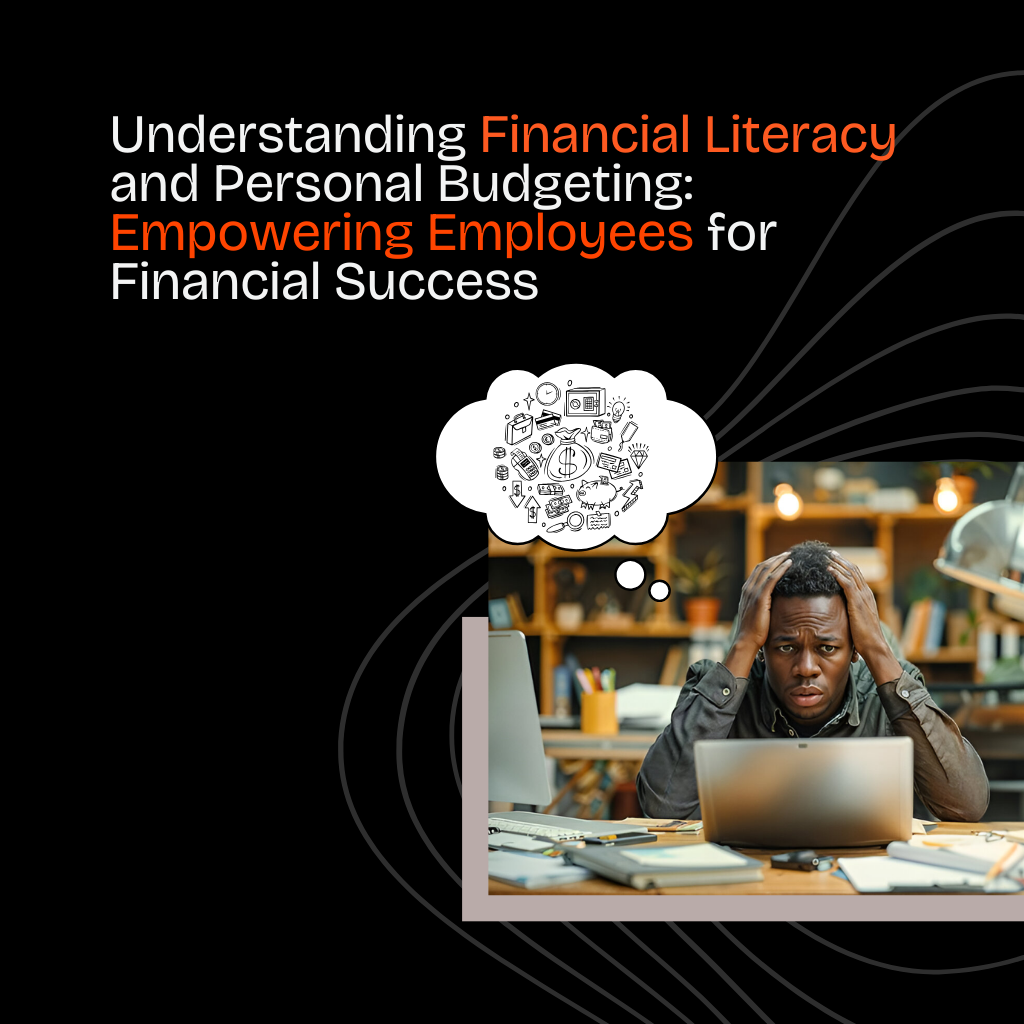What is Financial Literacy?
Financial literacy is the ability to understand and effectively use various financial skills, including budgeting, investing, saving, and managing debt. It goes beyond simply knowing how much money you have—it’s about making informed decisions that can positively impact your financial health, both now and in the future.
Why Financial Literacy Matters for Employees
Financial literacy plays a crucial role in an employee’s overall well-being. Here’s why it matters:
1. Reduces Financial Stress: Many employees face stress related to debts, bills, and managing daily expenses. Understanding basic financial concepts can reduce anxiety by offering a clear roadmap for managing money more effectively.
2. Enhances Productivity: Financial worries often carry over into the workplace, leading to decreased focus and productivity. When employees have their finances under control, they can focus better on their work.
3. Supports Long-Term Goals: With a strong grasp of financial principles, employees can plan for significant life events such as retirement, homeownership, and education for their children. This planning provides a sense of security and motivation for the future.
Key Components of Financial Literacy
Financial literacy is built on several key pillars. To manage your finances effectively, you need to understand these core components:
1. Budgeting: Creating and managing a plan that allocates income toward essential expenses, savings, and debt repayments.
2. Saving: Setting aside a portion of your income for future needs, whether that’s an emergency fund, a major purchase, or long-term goals like retirement.
3. Investing: Growing your wealth by purchasing assets such as stocks or real estate, which have the potential to increase in value over time.
4. Debt Management: Developing a strategy to handle loans or credit effectively, avoiding high-interest payments and penalties.
5. Financial Planning: Preparing for future financial needs, including significant life events like buying a home, funding education, or planning for retirement.
What is Personal Budgeting?
Personal budgeting is a financial plan that helps you allocate your income to various categories such as expenses, savings, and debt repayment. It provides a clear picture of where your money is going and ensures you’re not spending more than you earn.
Importance of Personal Budgeting
-Prevents Overspending: By tracking where every dollar goes, you can avoid unnecessary purchases and live within your means.
-Provides Financial Clarity: A budget gives you a clear overview of your financial health, highlighting areas where you may need to adjust spending or increase savings.
-Enables Future Planning: Whether it’s saving for a vacation, buying a house, or paying off debt, personal budgeting gives you the tools to achieve your financial goals.
Steps to Creating a Personal Budget
Here’s a step-by-step guide to building an effective budget:
1. Track Your Income and Expenses: Start by recording all sources of income and every expense, big or small. You can use a simple notebook, a spreadsheet, or a budgeting app like Money Manager.
2. Differentiate Between Needs and Wants: Prioritize your essential expenses (e.g., rent, utilities, groceries) before allocating money to discretionary spending like entertainment or dining out.
3. Set Financial Goals: Define both short-term goals (such as building an emergency fund) and long-term goals (like saving for retirement or a home).
4. Allocate Funds: One popular method is the **50/30/20 rule**—50% of your income goes toward needs, 30% toward wants, and 20% toward savings and debt repayment.
5. Review and Adjust Regularly: Life changes, and so should your budget. Revisit it regularly to ensure it aligns with your current financial situation and goals.
Understanding the 50/30/20 Rule
The 50/30/20 rule offers a simple way to manage your finances:
– 50% Needs: These are essential living expenses such as housing, groceries, utilities, transportation, and insurance.
– 30% Wants: This category includes non-essential spending like dining out, entertainment, and hobbies.
– 20% Savings/Debt Repayment: This portion goes toward building an emergency fund, saving for long-term goals, and paying down any outstanding debt.
Note: You can do it your own way.
Building an Emergency Fund
An emergency fund is a crucial element of financial security. It acts as a safety net for unexpected expenses like medical bills, car repairs, or sudden job loss. Here’s how to get started:
– How Much Should You Save? Financial experts recommend saving 3 to 6 months’ worth of living expenses.
– Why It’s Important: An emergency fund protects you from financial shocks, reduces reliance on high-interest debt, and provides peace of mind in times of uncertainty.
Managing Debt
Not all debt is created equal. Understanding the difference between good and bad debt can help you make smarter financial decisions.
– Good Debt: Debt used to invest in your future, like student loans or a mortgage, which can increase your wealth over time.
-Bad Debt: High-interest debt such as credit card balances or payday loans, which can quickly become overwhelming if not managed carefully.
As much as possible, stay away from debts that will not increase your wealth.
Strategies for Managing Debt
– Pay More Than the Minimum: Paying only the minimum on high-interest debt will keep you in debt longer. Aim to pay more whenever possible.
-Focus on High-Interest Debt First: Prioritize paying off debts with the highest interest rates to save money in the long run.
– Consolidate Debt: Consider consolidating multiple debts into one loan with a lower interest rate to simplify payments and reduce costs.
– Avoid New Debt: Only take on new debt if necessary, and always evaluate the long-term impact before borrowing.
Smart Saving and Investment Tips
Saving and investing are crucial to building long-term financial security. Here are a few strategies to get started:
– Automate Savings: Set up automatic transfers to a savings or investment account to ensure you’re consistently setting money aside. You can use Apps like PiigyVest and Cowrywise.
– Invest for the Long-Term: Explore investment options like retirement accounts, stocks, or real estate. These assets have the potential to grow over time and increase your wealth. You can use the Bamboo App.
-Take Advantage of Employer Benefits: Many employers offer retirement plans with matching contributions—ensure you’re contributing enough to take full advantage of these programs.
Financial literacy is an essential skill for employees. It empowers them to make informed decisions about budgeting, saving, and investing, helping them manage money more effectively and reduce financial stress. By creating and maintaining a personal budget, employees can take control of their finances and plan for a secure future. Employers can support this journey by providing access to financial education and resources, fostering a culture of financial wellness in the workplace.
Invest in your financial literacy today, and you’ll be well on your way to achieving your financial goals and improving your overall well-being.



